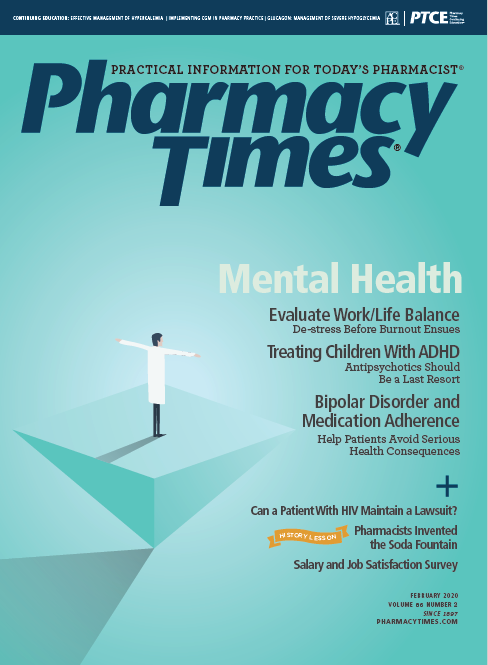Publication
Article
Pharmacy Times
Advanced Education and Training Opportunities Increase
Author(s):
New certification programs pave the way for climbing the career ladder in the pharmacy profession.
Advanced pharmacy technician roles are on the rise, with new certification programs now available.
Tiffany Kofroth, CPhT, CSPT, PhTR, presented an overview of the tech landscape at a session at the American Society of Health-System Pharmacists 54th Midyear Clinical Meeting & Exhibition in Las Vegas, Nevada, in December, presenting details about the new education and training requirements that are available to obtain the certified pharmacy technician certification.
After completing a Pharmacy Technician Certification Board—recognized education and training program or 500 hours of work experience, an individual can submit an attestation to officially become a tech.
A new exam, called PTCE 3.0, has been implemented as a blueprint focused on key areas relevant across practice settings. The program encompasses both the community and health system settings and prioritizes federal requirements, medications, order entry and processing, and patient safety and quality assurance.
There are many innovative tech roles that are not as well known but are equally important, such as business systems analysts, billing and insurance specialists, quality assurance techs, and sterile compounding instructors.
“Until 2017, we really didn’t have any advanced roles for the technician in their workplace,” said Kofroth, specialty pharmacy technician in continuing pharmacy education at The University of Texas at MD Anderson Cancer Center.
“Now that we have all of these fabulous roles that are available, we are seeing more technicians go for those advanced roles and actually climb up that career ladder,” which ranges from an entry-level tech to an analyst or role in education, she said.
During the presentation, Sanchita Sen, PharmD, BCPS, focused on medication reconciliation and the importance of becoming a tech in such a program.
The problem that accompanies medication history and reconciliation is that 60% of medication errors occur at admission, transfer, or discharge, which can increase adverse events, discrepancies, and health care costs, according to Sen, clinical associate professor at Mercer University College of Pharmacy in Atlanta, Georgia.
When completing an accurate medication reconciliation, adverse events, allergy discrepancies, and medication discrepancies are significantly reduced.
“Sometimes, there is a discussion about medication history and medication reconciliation,” Sen said. “I think the reason this is so important is because medication history is very task based, being the gathering of the information, and doing the preliminary medication reconciliation, that comparison really focused on where the technicians will really help and grow.”
Sen discussed the 3 steps involved in developing a tech-centered medication reconciliation program: start, build, and sustain.
“We work on sustaining our program the first time we start building it,” Sen said. “Sometimes, if we don’t have that backing...it’s easy to fall flat as we go through it.”
Many of the newly implemented tech programs, such as at Cooper University Hospital in Camden, New Jersey, and Emory Saint Joseph’s Hospital in Atlanta, focus on important resources that techs need for the real world, including information on how to conduct patient interviews, interpret an external medication history, and print medication and patient lists.
Sen emphasized that importance of communication skills, such as knowing when to ask patients more questions.
In addition, she found during previous studies that techs with retail experience have an advantage in the workforce.
“The technicians that we hired that had retail experience were excellent,” Sen said. “They had that insight of knowing all the brand and generic names; there was a learning curve for other types of technicians.”
In the last portion of the presentation, Noah J. Franz, PharmD, MHA, pharmacy operations manager at Froedtert Hospital, discussed how tech-check-tech (TCT) programs have evolved in the past decade, creating new opportunities for techs so that pharmacists can focus on clinical activities.
Some of the disadvantages of being a TCT include additional documentation and tracking work, increased workplace stress without increased pay, and a lack of standardized competency and education assessments. However, with new programs being implemented, such as the statewide program at Froedtert and the Medical College of Wisconsin in Wauwatosa, TCTs can demonstrate their abilities to advance in the field.
“With the right training and right skill set, pharmacy techs can do advanced things in advanced roles and do them really well,” Franz said.
To close the presentation, he emphasized the need to value techs.
“If you do something for your pharmacist staff, and you want your tech to take over something the pharmacists are doing so they can advance, you have to invest in your tech just like you do your pharmacist,” Franz said.
Investments, such as paying for additional certifications and membership in national organizations, are often overlooked for techs, he said.
“As professionals, we need to start saying, ‘when do we take the ‘technician’ out of ‘advanced technician roles’ and say, ‘we have advanced pharmacy roles,’” Franz said.







